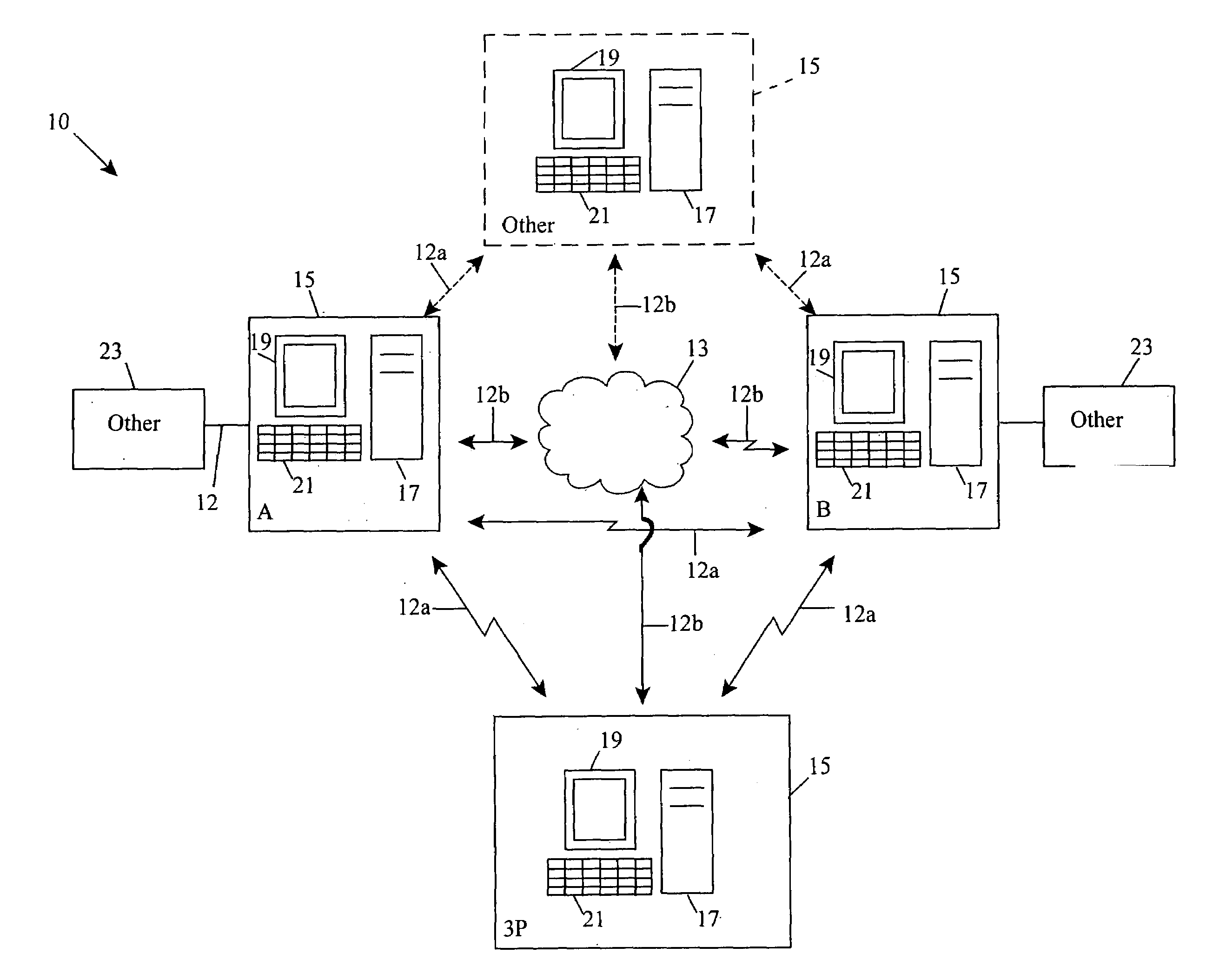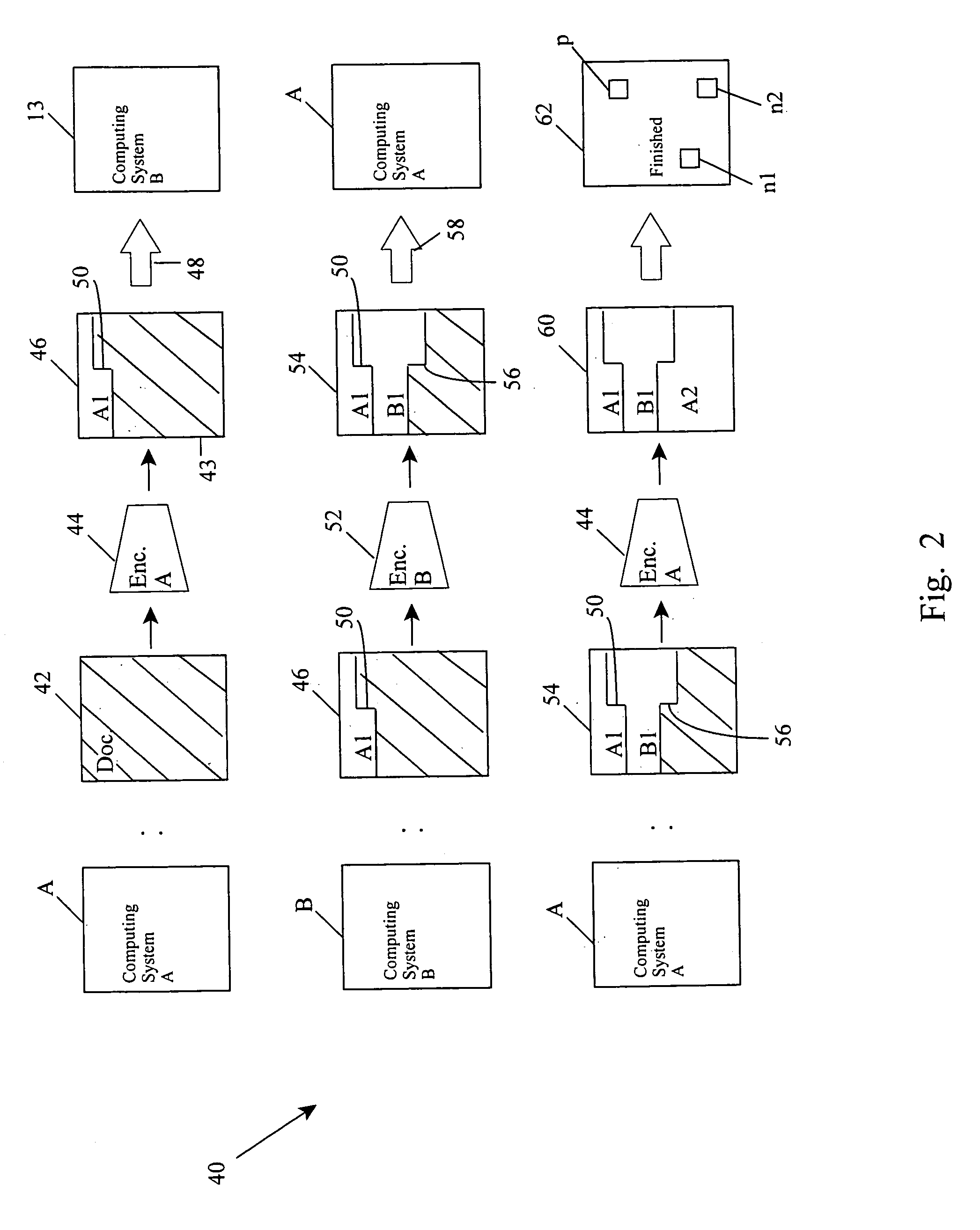Cooperative encoding of data by pluralities of parties
- Summary
- Abstract
- Description
- Claims
- Application Information
AI Technical Summary
Benefits of technology
Problems solved by technology
Method used
Image
Examples
example
[0050]In the following example, plural parties with differing encoding schemes were found to successfully achieve cooperative encoding of digital data and did so with entanglement of information (thus attaining the “waterfall property” described earlier). Namely, Lincoln's Gettysburg Address was used as the document to be encoded and, regarding digital data, included 1,473 bytes of text in 7-bit ASCII form. A first party's encoder relied on a fixed-segment-size halting criterion scheme while the other party's used a pseudorandom halting criterion scheme. In other words, the first party encoded bytes of the document until a predetermined fixed number of bytes had been encoded. Control then transferred to the other party where encoding continued until a number of bytes were encoded as permitted under a statistically motivated halting criterion. The process continued back and forth until the document was encoded. Among other things, it was found that while the overall entropy of the fi...
PUM
 Login to View More
Login to View More Abstract
Description
Claims
Application Information
 Login to View More
Login to View More - R&D
- Intellectual Property
- Life Sciences
- Materials
- Tech Scout
- Unparalleled Data Quality
- Higher Quality Content
- 60% Fewer Hallucinations
Browse by: Latest US Patents, China's latest patents, Technical Efficacy Thesaurus, Application Domain, Technology Topic, Popular Technical Reports.
© 2025 PatSnap. All rights reserved.Legal|Privacy policy|Modern Slavery Act Transparency Statement|Sitemap|About US| Contact US: help@patsnap.com



